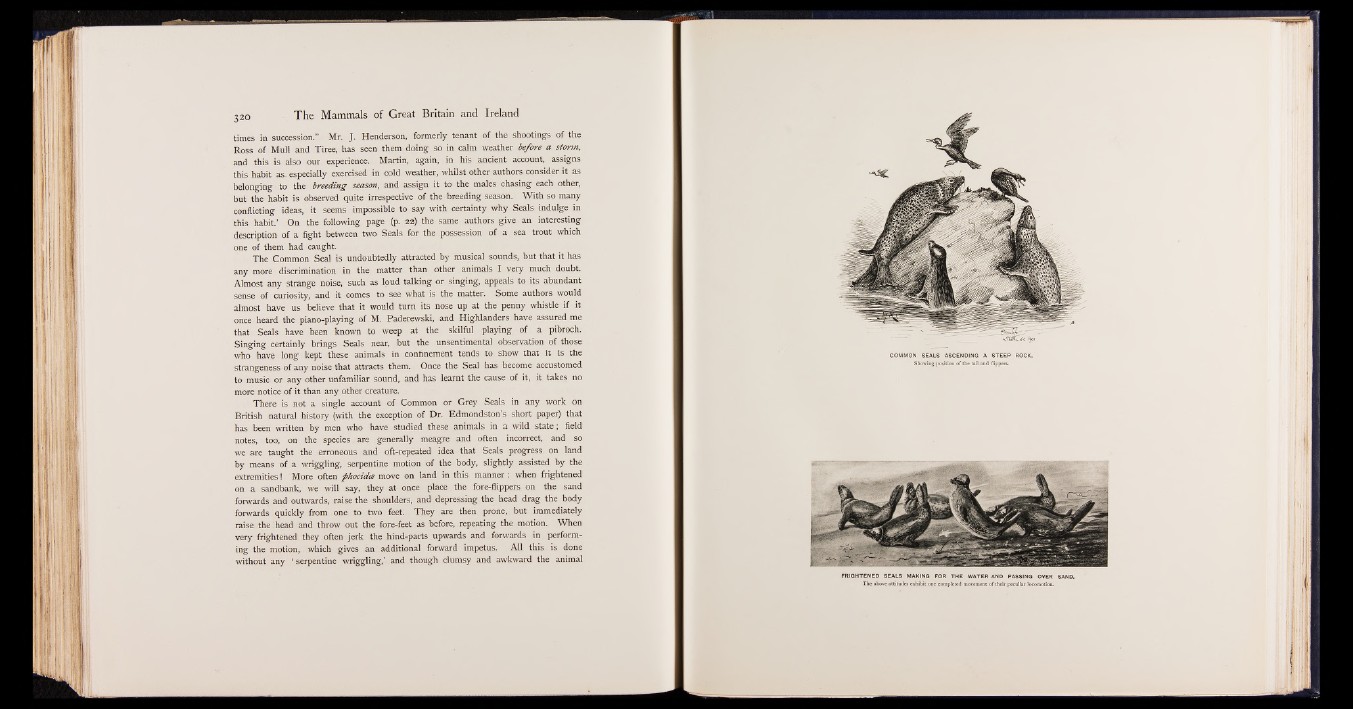
times in succession.” Mr. J. Henderson, formerly tenant of the shootings of the
Ross of Mull and Tiree, has seen them doing so in calm weather before a storm,
and this is also our experience. Martin, again, in his ancient account, assigns
this habit as. especially exercised in cold weather, whilst other authors consider it as
belonging to the breeding season, and assign it to the males chasing each other,
but the habit is observed quite irrespective of the breeding season. With so many
conflicting ideas, it seems impossible to say with certainty why Seals indulge in
this habit.’ On the following page (p. 22) the same authors give an interesting
description of a fight between two Seals for the possession of a sea trout which
one of them had caught.
The Common Seal is undoubtedly attracted by musical sounds, but that it has
any more discrimination in the matter than other animals I very much doubt.
Almost any strange noise, such as loud talking or singing, appeals to its abundant
sense of curiosity, and it comes to see what is the matter. Some authors would
almost have us believe that it would turn its nose up at the penny whistle if it
once heard the piano-playing of M. Paderewski, and Highlanders have assured me
that Seals have been known to weep at the skilful playing of a pibroch.
Singing certainly brings Seals near, but the unsentimental observation of those
who have long kept these animals in confinement tends to show that it is the
strangeness of any noise that attracts them. Once the Seal has become accustomed
to music or any other unfamiliar sound, and has learnt the cause of it, it takes no
more notice of it than any other creature.
There is not a single account of Common or Grey Seals in any work on
British natural history (with the exception of Dr. Edmondston s short paper) that
has been written by men who have studied these animals in a wild state; field
notes, too, on the species_ are generally meagre and often incorrect, and so
we are taught the erroneous and oft-repeated idea that Seals progress on land
by means of a wriggling, serpentine motion of the body, slightly assisted by the
extremities 1 More often phocidce move on land in this manner: when frightened
on a sandbank, we will say, they at once place the fore-flippers on the sand
forwards and outwards, raise the shoulders, and depressing the head drag the body
forwards quickly from one to two feet. They are then prone, but immediately
raise the head and throw out the fore-feet as before, repeating the motion. When
very frightened, they often jerk the hind-parts upwards and forwards in performing
the motion, which, gives an additional forward impetus. All this is done
without any ‘ serpentine wriggling,’ and though clumsy and awkward the animal